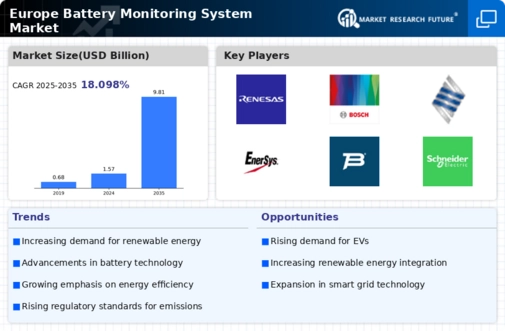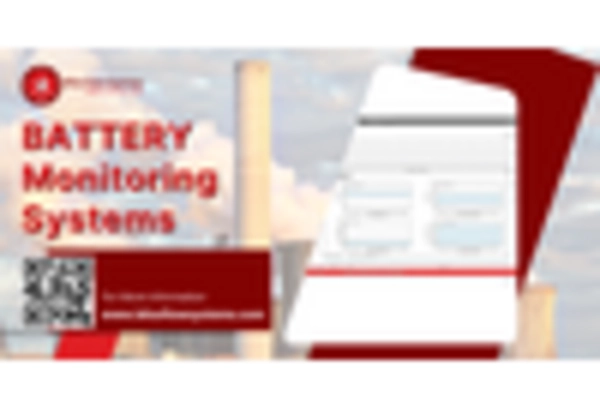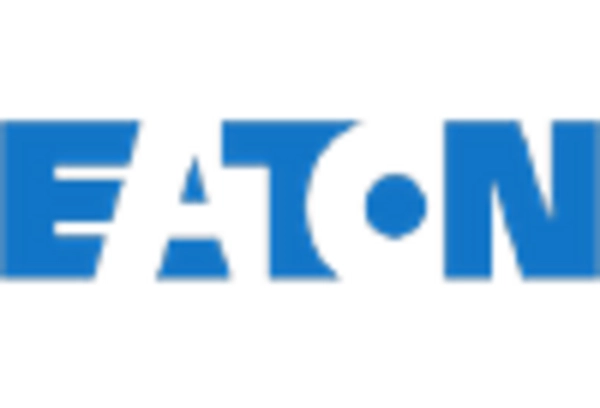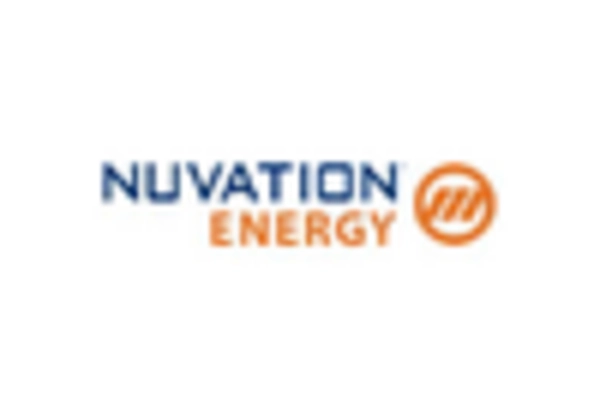Rising Demand for Electric Vehicles
The increasing demand for electric vehicles (EVs) in Europe is a pivotal driver for the battery monitoring-system market. As consumers and governments alike push for greener transportation solutions, the need for efficient battery management systems becomes paramount. In 2025, the EV market in Europe is projected to grow by approximately 30%, necessitating advanced battery monitoring technologies to ensure optimal performance and longevity. This growth is likely to stimulate investments in battery monitoring systems, as manufacturers seek to enhance the reliability and safety of their products. Consequently, the battery monitoring-system market is expected to experience significant expansion, driven by the need for real-time monitoring and management of battery health in EVs.
Government Initiatives and Incentives
European governments are increasingly implementing initiatives and incentives to promote the adoption of battery monitoring systems. These policies often include subsidies, tax breaks, and grants aimed at encouraging businesses and consumers to invest in advanced battery technologies. For instance, the European Union has set ambitious targets for reducing carbon emissions, which indirectly boosts the battery monitoring-system market. In 2025, it is estimated that government funding for clean energy technologies will exceed €10 billion, with a substantial portion allocated to battery management solutions. This financial support is likely to enhance the market's growth prospects, as stakeholders recognize the importance of effective battery monitoring in achieving sustainability goals.
Increased Awareness of Battery Safety
Increased awareness of battery safety among consumers and industries is driving the battery monitoring-system market in Europe. As incidents related to battery failures and malfunctions have garnered media attention, there is a heightened demand for systems that can monitor battery health and prevent potential hazards. In 2025, it is anticipated that the market for safety-focused battery monitoring solutions will grow by approximately 20%. This growth is indicative of a broader trend towards prioritizing safety in battery management, particularly in sectors such as automotive and renewable energy. Consequently, manufacturers are likely to invest in advanced monitoring technologies to address safety concerns, further propelling the battery monitoring-system market.
Growing Focus on Energy Storage Solutions
The growing focus on energy storage solutions in Europe is a crucial driver for the battery monitoring-system market. As renewable energy sources such as wind and solar become more prevalent, the need for efficient energy storage systems is becoming increasingly apparent. In 2025, the energy storage market in Europe is projected to reach €5 billion, with battery monitoring systems playing a vital role in ensuring the reliability and efficiency of these storage solutions. Effective monitoring systems are essential for managing the charge and discharge cycles of batteries, thereby maximizing their performance. This trend is likely to propel the battery monitoring-system market forward, as stakeholders seek to enhance the integration of energy storage with renewable energy sources.
Technological Advancements in Battery Management
Technological advancements in battery management systems are significantly influencing the battery monitoring-system market. Innovations such as artificial intelligence (AI) and machine learning (ML) are being integrated into battery monitoring solutions, enabling predictive analytics and enhanced performance tracking. In 2025, the market for AI-driven battery management systems is expected to grow by over 25%, reflecting the increasing reliance on sophisticated technologies to optimize battery usage. These advancements not only improve the efficiency of battery systems but also extend their lifespan, making them more appealing to consumers and businesses alike. As a result, the battery monitoring-system market is poised for robust growth, driven by the demand for cutting-edge technology.


















Leave a Comment